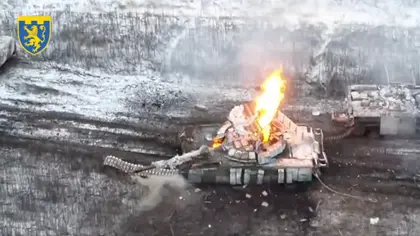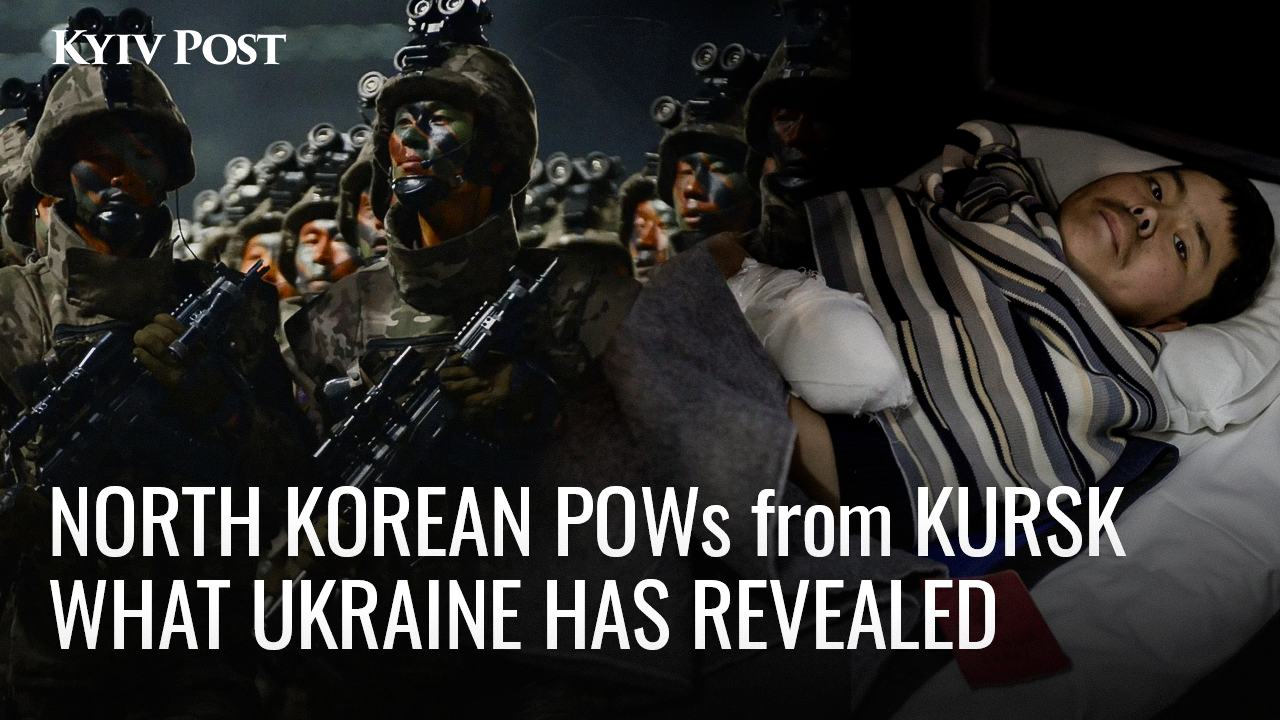If the iconic image at the start of Russia’s 2022 full-scale invasion of Ukraine was a clunky Soviet farm tractor chugging along dragging a Russian tank into captivity, then the two years later version is probably a $500 drone crashing into a $2.5 million Russian T-90M tank and torching it.
This Russian T-90M was hit and destroyed by a cheap 500 USD drone (plus Soviet grenade). This is the most expensive Russian MBT, priced between 2.3 - 4.5 million USD.
— (((Tendar))) (@Tendar) December 26, 2023
Source of 1st video: https://t.co/LRAtiT0M1Q
Source of 2nd video: https://t.co/So17Km9QlK#Ukraine #Donetsk… pic.twitter.com/lfq39B9qRz
Over the past 23 months, in the Armed Forces of Ukraine (AFU), hobby drones have gone from a nice-to-have combat tool operated mostly by geeks and usable only for short-range reconnaissance, into a weapons system so critical, that deployment of an AFU combat brigade without a dedicated drone unit would be considered military idiocy by practically all ranks.
According to most drone operators and field commanders, about one in three (if drone videos swamping the Ukrainian internet are to be believed, it’s more) of every Russian combat vehicle destroyed in Ukraine these days is blown up, burnt or broken by a budget drone.
JOIN US ON TELEGRAM
Follow our coverage of the war on the @Kyivpost_official.
President Volodymyr Zelensky, in an early January speech, named mini-drone production and fielding as a top war priority, and named as a national war goal – as noted by New Scientist magazine – that in 2024 Ukraine should manufacture more drones to launch into the sky to fight Russia, than it deploys soldiers on the ground.
The Ukrainian battlefield is saturated with drones flown by pilots, many of them now with months and even years of wartime flight hours under their belts. Operators reload and launch strike aircraft in less than a minute.

Biden’s Security Assistance to Ukraine Record – A Mixed Bag
Quadcopters chase Russian infantrymen through trenches and around abandoned vehicles before blowing up. Pilots drop explosives with such precision a grenade threads past protective screens installed specifically to block drone-dropped munitions, plunks into an open tank hatch, and sets a tank on fire.
Eastern Ukraine, a Ukrainian drone from the 103rd TDF Brigade drops a thermobaric grenade into the driver's hatch of a Russian T-80BVM, causing a catastrophic cookoff and turret toss. pic.twitter.com/4YwClUxVGg
— OSINTtechnical (@Osinttechnical) January 26, 2024
Ukrainian drone pilots have long understood that aircraft range depends most on the size and power of the battery of the aircraft, and the overall weight of whatever it is the drone must tote to the target.
As the war has ground on, Ukrainian field operators have learned to extend range by packing explosives into a lighter carrying container, by hooking a more powerful battery to the drone, or both.
In the early days of the war a drone might deliver an unmodified grenade or even a mortar round to a target. The problem then was steel is heavy.
In some units, drone artificers now melt the explosives out of conventional munitions to make a drone payload that weighs less but delivers a bigger bang. And if delivered by drone the explosives and shrapnel almost always detonate much closer to a Russian soldier or vehicle than if it were sent to target as a conventional artillery shell or mortar round.
VIDEO of Ukrainian troops improvising because of shortages. These are 82mm mortar rounds with fuses removed, being heated to remove the explosive charge. This is poured into a can to create an IED (improvied explosive) for drones. #Ukraine #Ukrainewar #UkraineRussiawar pic.twitter.com/kFWNSnoFgq
— raging545 (@raging545) January 26, 2024
Another approach to the problem, and one according to reports and Kyiv Post reporter observations practiced in most drone units operating across the AFU, has been to sacrifice some range in favor of a full-on anti-tank warhead, usually from an 82mm RPG grenade launcher, capable of destroying all but the very latest Russian tanks from most angles of attack.
In a Jan. 25 video, a pilot stating he is with the AFU’s 40th Separate Air Assault Brigade praised the system as easy to operate and deadly to Russian combat vehicles.
A test flight conducted by the drone group Wasp proposed a simple solution to the very toughest Russian T-90 tanks: strap not one but two RPG warheads onto the drone, along with a bigger battery.
Ukrainian drone bombers test and launch drones with two PG-7 charges from a hand-held grenade launcher at once.
— Sharky 🇬🇧 🤝 🇺🇦 (@Jamie04381095) January 5, 2024
So that the orcs' asses burn twice as hot...🔥🔥 pic.twitter.com/hDfPIXmUaf
By the second half of 2023, as the fighting line for the most part became static and both sides moved to dig in front line troops into deeper and safer bunkers and trenches, enterprising Ukrainian drone operators started to field drones carrying incendiary warheads.
The main component of that kind of munition is a compound called thermite, a pyrotechnic material made from metal powder and metal oxide that burns at near-sun-surface temperatures when ignited.
Popular with Ukraine drone armorers because the components are easy to find and thermite is ideal for setting a broken and abandoned armored vehicle on fire, the munition has found a new use attacking concrete pillboxes with troops inside.
VIDEO of the destruction of a Russian pillbox in the east by a Ukrainian drone carrying an incendiary warhead. These pillboxes were recently tested & installed along the Russian border in Belgorod. #Ukraine #ukrainewar #UkraineRussiawar #Russia https://t.co/JkUTwb78Hu pic.twitter.com/a2mbIMLO0c
— raging545 (@raging545) January 27, 2024
Another design approach has been to deal with increasingly stronger Russian fortifications by precision-flying drones through gaps and windows of bunkers, and then detonating an anti-personnel munition inside.
Operators at an unidentified front-line location recorded manufacture and testing of one such weapon, as described by an artificer the device was a “jam tin” filled with explosives, ball bearings, and epoxy.
If purchased in a Ukrainian street bazaar or online wholesale store, most of the materials making up the bomb looked to cost, collectively, less than ten dollars.
Tests showed a man-size target with hundreds of high velocity punctures. The AFU soldier described the weapon as “a nice gift for our neighbors.”
Ukrainian homemade fragmentation ammunition for FPV drones (testing)
— PS01 □ (@PStyle0ne1) January 28, 2024
Essentially, it is a sewer plug filled with an explosive substance, on one side filled with epoxy resin (or a transparent compound), fragmentation submunitions in the form of steel balls (3 mm in diameter),… pic.twitter.com/laMpGXLtfv
The Ukrainian and Russian internet already is offering up reports, unconfirmed thus far, of drones carrying grenade launchers, or anti-tank missiles, or even machine guns. Drones with limited artificial intelligence, meanwhile, are a confirmed reality on the Ukrainian battlefield.
Technically, the first drones with artificial intelligence aboard were Russian attack drones called a Lancet, which were fielded in Fall 2022 and carried Cold War-era programming helping it tell the difference between a random object and the target the operator was aiming at, Andrey Maximov, a Moscow-based weapons engineering expert said in a December Linked In tech review.
By the latter half of 2023, Russia had upgraded Lancet into a version called Izdeliya 53, or Z-53, carrying a smarter automated guidance system enabling it to seek out and attack pre-programmed target profiles like tanks, trucks or a bunker.
The first confirmed Ukrainian drones with artificial intelligence enhancing targeting was, according to reports from both sides, seen around the village Krynky in mid-January, where Ukrainian Marines hold a bridgehead on the left bank of the Dnipro River.
According to Russian sources, five Ukrainian kamikaze aircraft took to the skies to defend Marine positions by flying to Russian lines, to seek, identify and strike target autonomously. The attacks took place without input from the pilot, whose only job was to fly the drone to the target area.
“The enemy (Ukrainian forces) has started testing drones with AI,” wrote the Russian mil-blogger VDV Za Chesnost’ I Spravedlivost’ (ВДВ за Честность и Справедливость) in a Jan. 29 report.
“Together with the creation of full-time strike drone units down to individual battalions, we can state that the enemy is ahead of us in introducing new technologies on the battlefield. All this can radically change the course of conducting the SVO (Russia’s war against Ukraine) and not in our favor. In fact, the enemy is now testing new means and forms of war in the Kherson direction.”
Robert Brovi, a Ukrainian drone commander deployed to the Kherson sector, in a Jan. 5 interview with Kyiv 24 television, confirmed Ukraine is now fielding drones with artificial intelligence to assist targeting, but added that the operator still was responsible for flying the aircraft to the attack sector and cueing the drone to home in.
Mini-drones are shaping the modern battlefield and are present in numbers never before seen in war, but, as a weapons system they cannot fully replace more conventional weapons like tanks and artillery, he said. But in future there need to be more and more, Brovi said.
You can also highlight the text and press Ctrl + Enter













